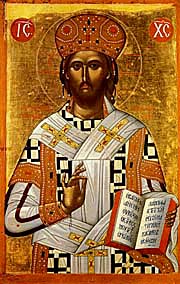The Institute for Christian Formation

Saint Agnes, Virgin & Martyr
Feast Day (Memorial): January 21
Follow us on Facebook to keep up to date with our news and newest resources!
St. Agnes
Mosaic, Circa 450
Galla Placidia Mausoleum, Italy
On January 21st each year, the Roman Catholic Church celebrates the Feast (Obligatory Memorial) of Saint Agnes. Saint Agnes was a Christian martyr who was put to death at a young age (12-13 years of age) during the Diocletian persecution. Some sources say she was martyred around the year 258, while some put her death in the very early 4th century. Tradition says that Agnes, whose name means “pure” in the Greek language, was very beautiful. The story says that she wanted to dedicate her life to God and that she did not want to marry. But she was very beautiful, and many young men wanted to marry her. The story continues that one of the young men whose proposal she turned down reported to the authorities that she was a Christian, which instigated her arrest and eventual martyrdom. A church was built over her tomb.
The word “religion” literally means to “reconnect”, and the connections that we make are fascinating. As was stated above, the name “Agnes” means “pure” in Greek. But it sounds a lot like the Latin word “agnus” which means “lamb.” Hence you will almost always see Saint Agnes pictured with a lamb and a palm branch. (A palm branch is a symbol of victory. In the Book of Revelation 7:9, in the Bible, those who remained faithful to Christ unto death are holding palm branches in heaven.)
But back to the “lamb” connection. Each year on Saint Agnes’ January 21st Feast Day the Pope blesses two lambs. This tradition dates from the 9th century. The wool from these lambs is used to make a vestment called a pallium. The pallium are white woolen stoles, decorated with six black crosses. Once woven, the pallia are then placed in an urn at the Tomb of Saint Peter. Each year on June 29th, the Feast of Saints Peter and Paul, Apostles, the Pope blesses the pallia in the presence of newly appointed Metropolitan Archbishops. Each Archbishop then takes the pallia to his home diocese, where he schedules a time with the nuncio for the pallia to be bestowed upon him. The pallia symbolizes the unity of the Archbishops with the Pope and Rome, as well as symbolizing that the Archbishops are the shepherds of their flocks.
Pope Innocent III wearing a
Y-shaped Pallium
Unknown Artist, 1219
Saint Agnes is the patron saint of Christian virtue. Her name is mentioned in the Roman Canon.
The poet John Keats wrote “The Eve of St Agnes” at Chichester and Bedhampton in January 1819, and it was published in 1820. Keats based his poem on the superstition that a girl could see her future husband in a dream if she performed certain rituals on the eve of St. Agnes’ feast day. You can read this poem here.

